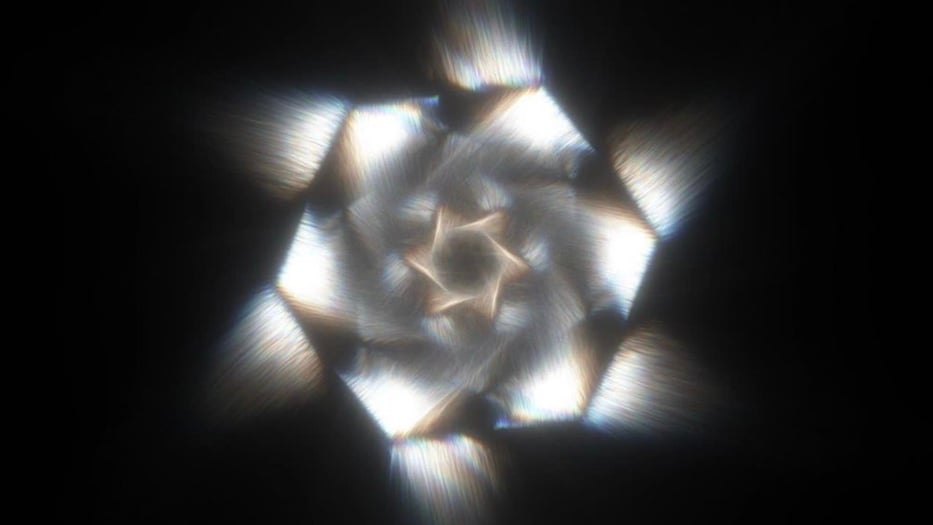
Arts & Culture | Artspace New Haven | Visual Arts
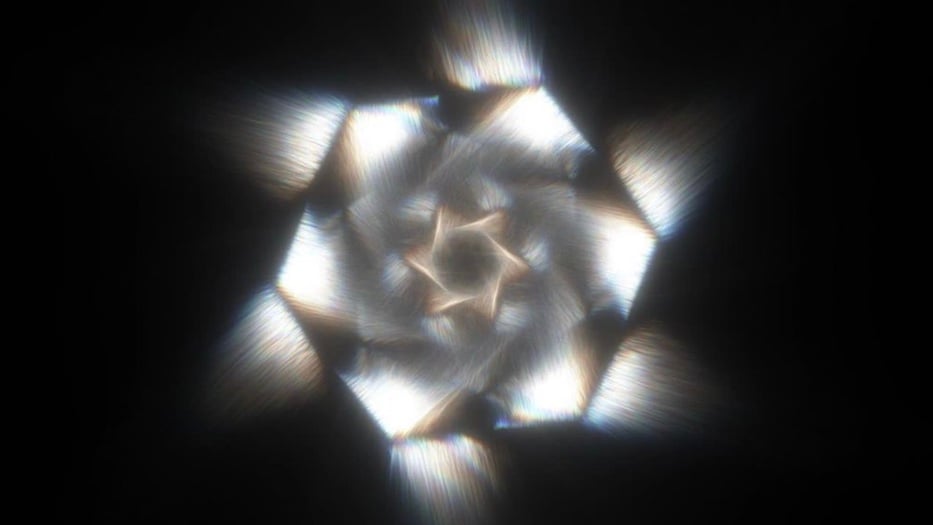
Courtesy Jason Ting.
Silver and gold oval-shaped objects, reminiscent of celestial bodies, spring forth from a black background. They expand and contract, reaching the edges of the screen. As they disappear from view, they are replaced by newer orbs, continually created in the center of the screen. After a while, the screen shifts to a diamond-shaped flickering light, radiating from a shimmering white center.
They are multimedia artist Jason Ting’s Spark Studies, which closed at Artspace New Haven earlier this month. In the works, Ting seeks to use motion as a storytelling tool. During Artspace's winter shutdown, his dynamic projections illuminated the building’s street-facing windows, allowing passersby to experience a display of wonder and creativity expressed through a little-known medium.
While Ting’s work is inspired by nature—titles include "Spiral Blast," "Spark Snowflake," and "Butterfly Effect"—the pieces evoke feelings of being in an alternate dimension, one shaped by kaleidoscopic imagery and prismatic colors. After sending light into the darkest time of the year, they are giving the artist space to think about future projects.
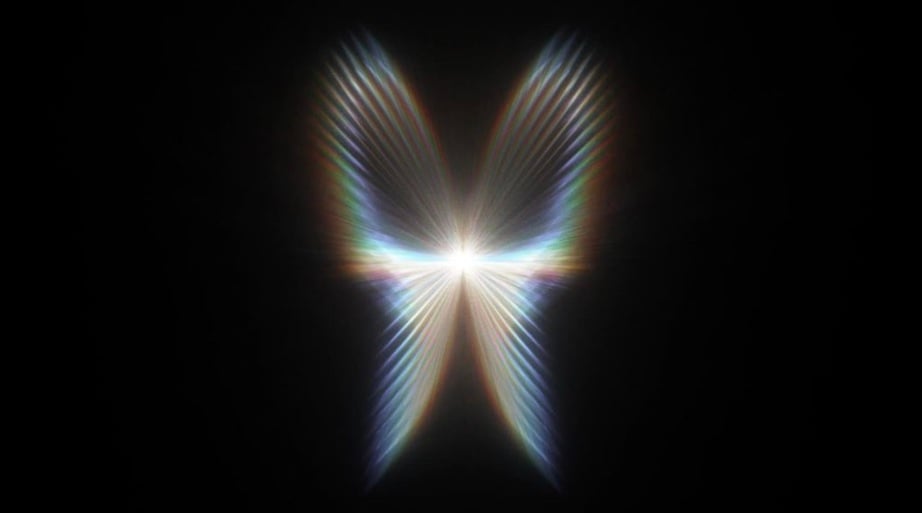
Courtesy Jason Ting.
Ting created 12 projections for the exhibit, separated into categories entitled "holiday," "space," and "geometric." The different pieces are all roughly two minutes long and consist of collections of geometric shapes on a black background. Inspired by natural processes such as waves in the ocean, Ting's computer-generated art aims to capture the "dynamism of moving images, shapes, and forms,” he said in a recent interview with the Arts Paper.
The pieces have been months in the making. After exhibiting a piece at Artspace's Open Source Art Festival last October, Ting began to explore the possibility of curating a larger-scale exhibit with Artspace curators. This collaborative process allowed him to develop a "skill for curation," allowing him to practice refining his work for larger audiences.
In using technology, Ting was able to capture the ever-changing, ephemeral nature of these systems. The moving images onscreen correspond to computer code that Ting has written. During the Open Source Festival, he displayed a computer running code in real time. For Spark Studies, he segmented the art into two-minute videos.
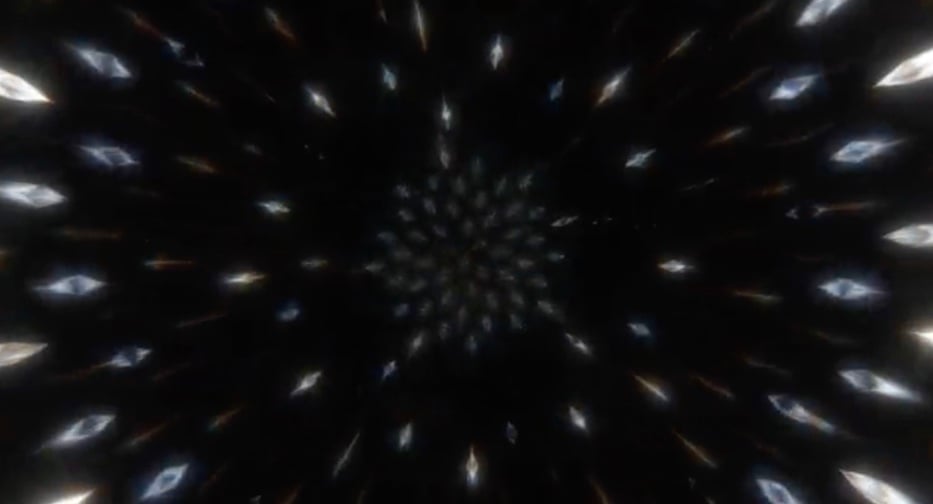
Courtesy Jason Ting.
Ting's introduction to the possibilities of computer-generated art began during his childhood, where he experimented with different methods.
"I was always a creative kid, always tinkering and sketching,” he said in an interview with the Arts Paper earlier this month. “ My mom was a computer programmer and she brought home a computer one day and I would just tinker on it. And I think that's when I began to use the computer to make aesthetically interesting things."
His college studies bridged software programming and creative work, but Ting began his present-day practice, in the "creative coding" genre, in 2020. Daily practice allowed him to develop both technical skills as well as a visual style. He connected online with artists who were experimenting with similar methods and took a creative coding class taught by new media artist Zach Lieberman.
Through a process of creative exploration, Ting created "a body of work to self-curate from," centered around light, motion, and dynamism, drawn from his daily practice.
Ting's work is both intentional and experimental. While he centers his work around natural themes, his methods are iterative, involving creative decisions made during the process of coding. He views coding as "just another medium to express one's own style," noting that some digital artists mimic brush strokes and other aspects of more traditional art forms.
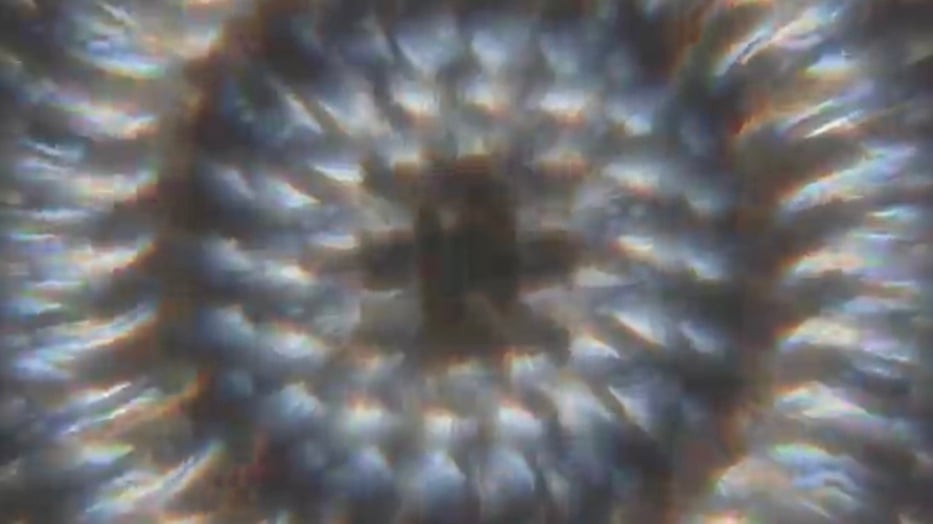
Courtesy Jason Ting.
While digital artists must learn to work with constraints of the medium, such as screen size and the capabilities of their computer, Ting has many of the same considerations as other artists. For instance, he hopes to challenge the limits of the medium and experiment with audio visual and sound collaborations in the future, drawing on a previous experience creating an interactive immersive exhibit. He envisions a projection that would respond to movement within the space.
Ting hopes that his work both introduces audiences to the possibilities of computer generated art and evokes feelings of wonder, delight, and calmness, he said. He hopes that the exhibit gives viewers a chance to reflect and connect the artwork to deeper memories, seeing his work as "abstract enough" to provide space for this reflection. As an artist, he is interested in exploring the physiological connection between what viewers see in artwork and their reactions and feedback to the work.
"It's a metaphor for how we interact in the world,” he said. “When we're around people that are anxious, we sometimes feel that anxiety, and we feel the joy around people filled with joy. So I think about how art can be used in that way too.”

